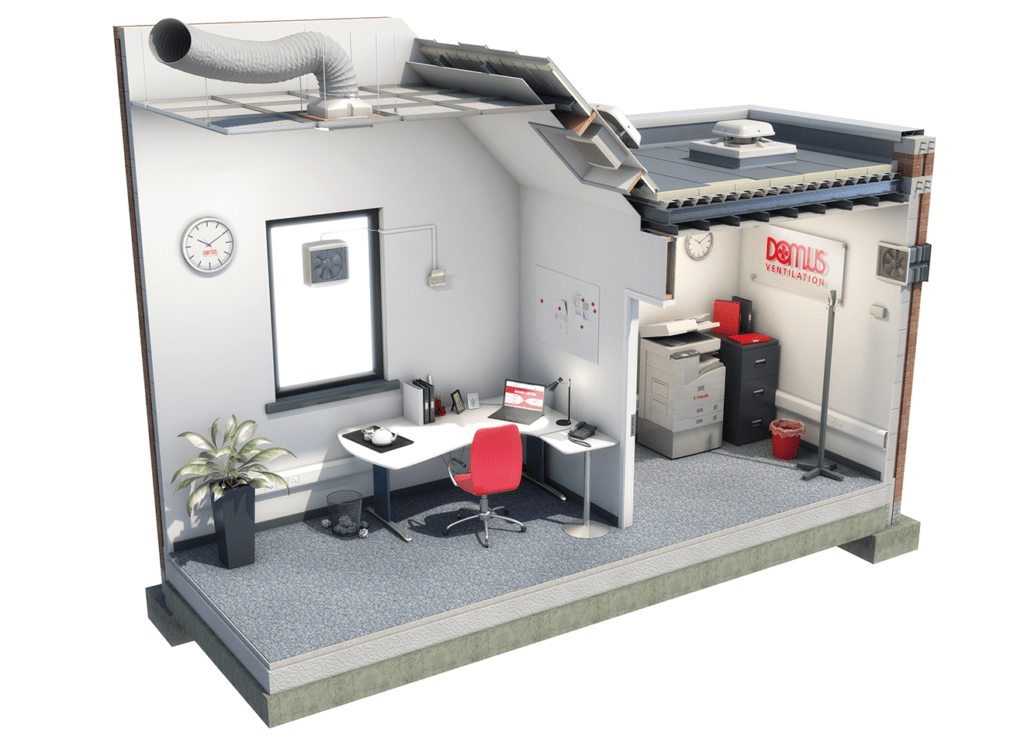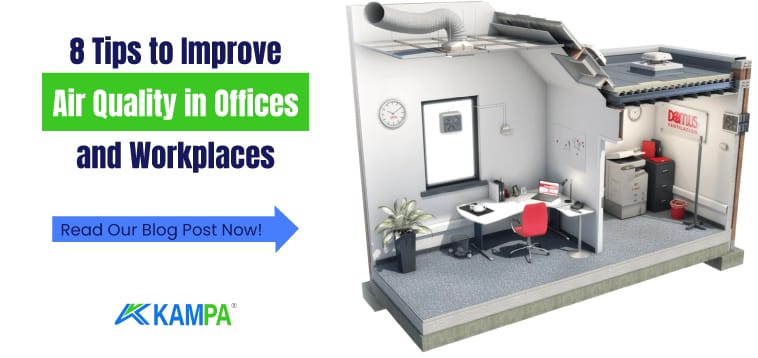8 Tips to Improve Air Quality in Office and Workplace
Improve air quality is very important in public spaces. Small but crowded spaces such as offices often have poor air quality. Factors such as dust, carbon dioxide and temperature reduce air quality.
Table of Contents
Inadequate air quality in the office leads to negative consequences such as headaches, respiratory failure and easy transmission of flu infections. Improving air quality is therefore of great importance.

Improving Air Quality in Offices?
There are a few easy ways to improve air quality and ensure that employees work in happier, healthier environments. Try these tips to reduce the likelihood of staff getting sick and improve office air quality.

- Keep vents open. Furniture, boxes or other items can block vents. Make sure your vents are open to allow air circulation inside the office.
- Change air filters frequently. If your air filters are clogged, there is no airflow. Over time, dust and dirt will accumulate behind the filters and settle inside your air ducts, making the health of your employees even more at risk. As a general rule, air filters should be replaced every 6-12 months.
- Maintain healthy humidity levels. Humidity helps keep dust, dirt, mold, mildew and other allergens under control. Use dehumidifiers to control the humidity level in your office.
- Remove debris immediately. Excessive moisture or dampness promotes the growth of mold and mildew, which can cause serious health risks. Fixing mold damage is more harmful than it is. It is therefore in your best interest to reduce the risk of mold growth by cleaning up water leaks as soon as possible.
- Use plants. Plants not only add a pleasant aesthetic to the office, they also absorb toxins. They produce more oxygen, meaning employees can breathe easier.
- Use fresh air whenever possible. If your office has windows, open them and let fresh air in. When the weather permits, keep your windows and doors open to let fresh air in and help the air out. If you are not able to open windows and doors all the time, you can use auxiliary equipment such as fans and extractor fans to improve air quality.
- Keep your office clean. Regularly vacuum, dust, sanitize, de-clutter and dispose of all accumulated rubbish promptly. Often, regular cleaning is necessary to ensure that this important component of indoor air quality is not overlooked.
- Inspect and clean your air ducts. Check that your air ducts are affecting their quality or circulation and need to be cleaned. If there are any signs that they should be cleaned, call in the experts to rectify the issue before anyone’s health is jeopardized.

How Much Should the Air Flow Rate Be in Offices?
How much air flow rate do we need to ventilate? That is, what is the volume of air moved by the fan per hour? This air flow rate is expressed in cubic meters/hour.
- The size of the space,
- Ambient temperature,
- The number of people inside,
- Air pollution,
The air flow rate is calculated by taking into account factors such as.
Let’s calculate area with a simple example.
- A 30 square meter office,
- 2.90 height
- 10 working staff,
- Equipment such as computers, printers, faxes,
- No window for ventilation, duct type ventilation will be used
Let’s see. Based on the information provided, ventilation experts make a calculation similar to the following.
- 30*2,9 : 87 square meters.
- 8*87 : 697 m3 /h The air flow rate required for 1 person is needed. (“8” here is the number ofair change coefficient. In other words, it tells how many times the air in the environment will be changed per hour. The air change coefficient of each environment is different.)
- 697*10 : 6970 m3 /h is the air flow rate required for all personnel working inside.
- Accordingly, a fan or aspirator should be preferred.
If you want to make different calculations, see our other article on fan calculations .
Subscribe to our newsletter to be notified instantly of the next article. If you found it useful, share it on your social media accounts. Specify your questions and comments by commenting. Stay in good health.

